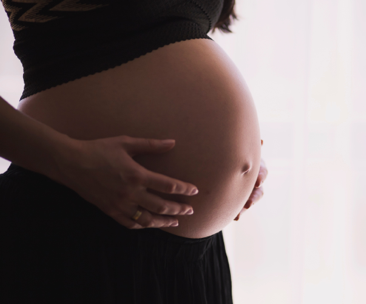If you are currently a patient here at Ozar Wellness House, it is very likely you have done Pilates before. It is a low to no impact exercise that focuses on increased body awareness and strengthening, loosening, and stabilizing muscles. For these reasons, it also happens to be an excellent exercise for pregnant women!
Benefits of Pilates During Pregnancy
We’ve put together a list of some of our favorite reasons for choosing Pilates during pregnancy! Here they are:
1. Pilates builds strengths in the abs, lower back, and pelvic floor while placing minimal strain on other muscles. This strength generally leads to less pain as your body continues to change and grow.
2. Light strength training exercises in the first trimester have been shown to decrease chances of unhealthy weight gain. While weight gain is a necessary and healthy part of pregnancy, it is common for women to gain too much weight. This could lead to gestational diabetes, complications during delivery, and a harder time losing weight post-delivery. Choosing Pilates can help stave off those unnecessary extra pounds without putting undue stress on the body.
3. The routines are highly adaptable. As your pregnancy evolves, so can your workout. This prevents injury and allows your body’s changing needs to be met at each step of the pregnancy.
4. Pilates opens the chest and teaches proper breathing and relaxation. These learned techniques allow you to breathe properly during delivery. It also helps you keep the pelvic floor loose and relaxed. Both make for a much easier delivery with quicker recovery.
5. Post-delivery, Pilates is very useful in the healing of diastasis recti. Diastasis recti is where the rectus abdominis separates during pregnancy, leaving you with a small pooch even after delivery. It is very common. In fact, around 2/3rds of pregnant women experience it. But don’t worry! Pilates is an incredibly effective, simple treatment. It may require some dedication, but it can absolutely get your muscles back to their pre-baby spot.
6. Pilates allows you to become more aware of and in tune with your body. This awareness and the patience that often comes from it is incredibly helpful during pregnancy. It encourages you to listen to your body and its needs, allowing you to better serve you and your baby’s best interests.
The routines are highly adaptable. As your pregnancy evolves, so can your workout. This prevents injury and allows your body’s changing needs to be met at each step of the pregnancy.
Pilates opens the chest and teaches proper breathing and relaxation. These learned techniques allow you to breathe properly during delivery. It also helps you keep the pelvic floor loose and relaxed. Both make for a much easier delivery with quicker recovery.
Post-delivery, Pilates is very useful in the healing of diastasis recti. Diastasis recti is where the rectus abdominis separates during pregnancy, leaving you with a small pooch even after delivery. It is very common. In fact, around 2/3rds of pregnant women experience it. But don’t worry! Pilates is an incredibly effective, simple treatment. It may require some dedication, but it can absolutely get your muscles back to their pre-baby spot.
Pilates allows you to become more aware of and in tune with your body. This awareness and the patience that often comes from it is incredibly helpful during pregnancy. It encourages you to listen to your body and its needs, allowing you to better serve you and your baby’s best interests.
Make sure you exercise caution.
Prior to hopping right into Pilates, there are some things you should consider. First, while mild to moderate exercise is a healthy, optimal choice for the majority of pregnant women, it is always important check with your doctor to make sure it is right for you. Next, make sure you choose an instructor who is trained specifically in prenatal Pilates. The body is constantly changing during pregnancy. It is important to have an instructor who is aware of these changes and knows exactly how to accommodate them. Lastly, make sure you choose a one-on-one or very small group environment. Form and pacing are especially important during pregnancy. It is very difficult for instructors to keep an eye on you when they are in charge of a classroom full of students.
Continuing After Giving Birth.
After giving birth, it may be tempting to jump right back into group classes to get your pre-pregnancy body back fast. However, that may not be the best option. Group classes don’t offer the sort of individualized attention your healing body will require. By placing too much stress on your body, you risk injury and a slower healing process. It may be a better option to continue, instead, with specialized one-on-one postpartum Pilates.
Once you are cleared by your doctor, you will be able to jump right back in to one-on-one Pilates without fear of injury or hindering the healing process. In fact, the individualized attention will likely aid in healing, making the transition back to your pre-baby body as smooth, quick, healthy, and painless as possible.
Try it out!
If you are interested in trying out pre or post-natal Pilates or are trying to get pregnant and would like to build a foundation, give us a call! We can get you set up with one of our certified Pilates instructors. They will lead you through exercises, relaxation, and breathing techniques specifically designed to facilitate a healthy pregnancy, delivery, and recovery!

